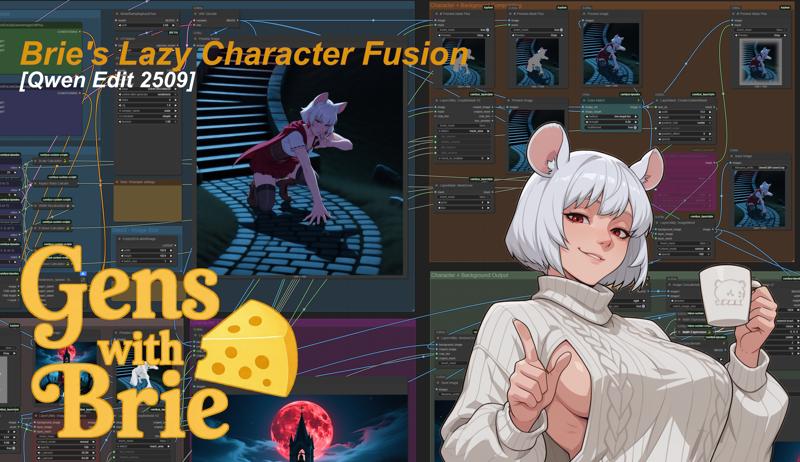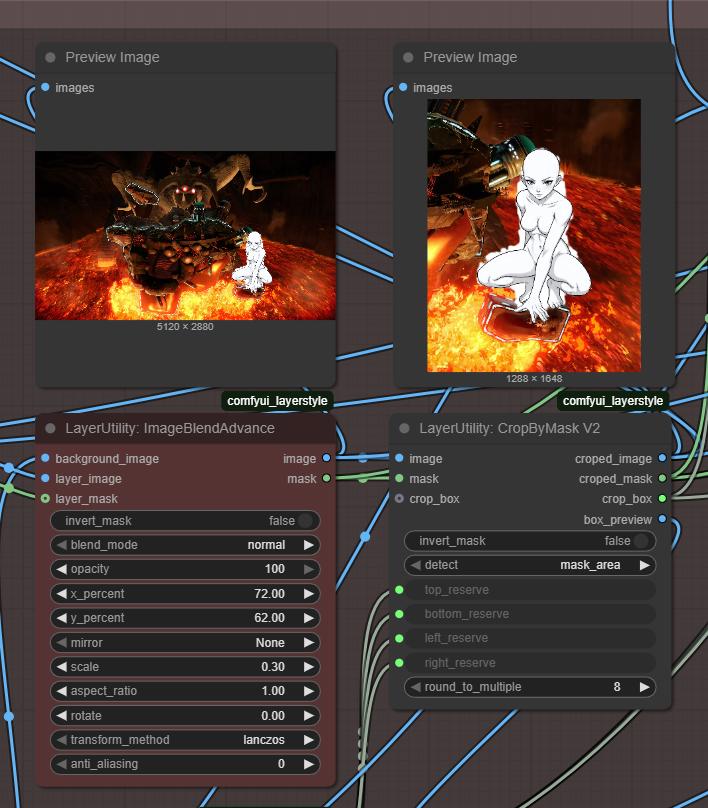 Hey y'all!
Hey y'all!
Take a character sheet, a character dummy and a scene to make a properly reposed character that is fused into the scene!
This workflow is used in conjunction with my Lazy Character Sheet Workflow and Lazy Character Dummy Workflow. Both the character sheet and character dummy are required for this to work.
Special thanks to tori29umai (on Twitter) for the charaBG lora and @DigitalPastel for workflows, models, and images I've used.
Since this workflow requires inputs from 2 other workflows, and you need to position
VERSION 1.0
The workflow is based on the normal Qwen Edit 2509 workflow, same models too.
In addition, it uses tori29umai's charaBG lora model.
The workflow is based on my previous Lazy Character Relight workflow.
Input:
Character Sheet Image
Character Dummy Image
Scene Image
Prompt (Needs minor modification describing lighting, shadows and reflections)
Position / Scale / Rotate Dummy image into the scene
Output:
Character Fusion image
Character Fusion + Dummy + Sheet + Scene info image
Cropped Character Fusion image
Cropped Character Fusion + Character Dummy comparison image
Models:
Diffusion Model:
LoRA;
Text Encoder:
Upscale Model:
VAE:
RMGB (this goes here: \custom_nodes\ComfyUI_LayerStyle\RMBG-1.4\)
This workflow is heavy, complicated and has a lot of inputs. However, for a single scene, usually the Character Sheet image, Scene images, and prompt, do not change. The prompt doesn't change because usually the lighting conditions on the character does not change when switching dummy images.
What generally changes with each gen, is that you will need to reposition and rescale the dummy image in the scene each time the dummy image is changed. That's where I find I spend the most time, but even then, that's a few seconds at most. You'll need to run the workflow briefly to see the repositioned image.
See below. The red node is where you position, scale and rotate the dummy within the scene. you can see the character in the full scene and the size of the cropped image.

Other things I will not emphasize, because those settings aren't touched as frequently, if ever. There are plenty of notes within the workflow, please read them when you encounter anything you don't understand. It's not necessary to read them all though.
For me, I'm going to use this to pose characters into scenes, which I will then crop later to use as keyframes for video generation. My goal is full control in character animation, but this would work just as well for comics / manga.
Anyhow, enjoy the workflow. Please post if you have any questions or suggestions!
Stay Cheesy Y'all!~
Brie Wensleydale

